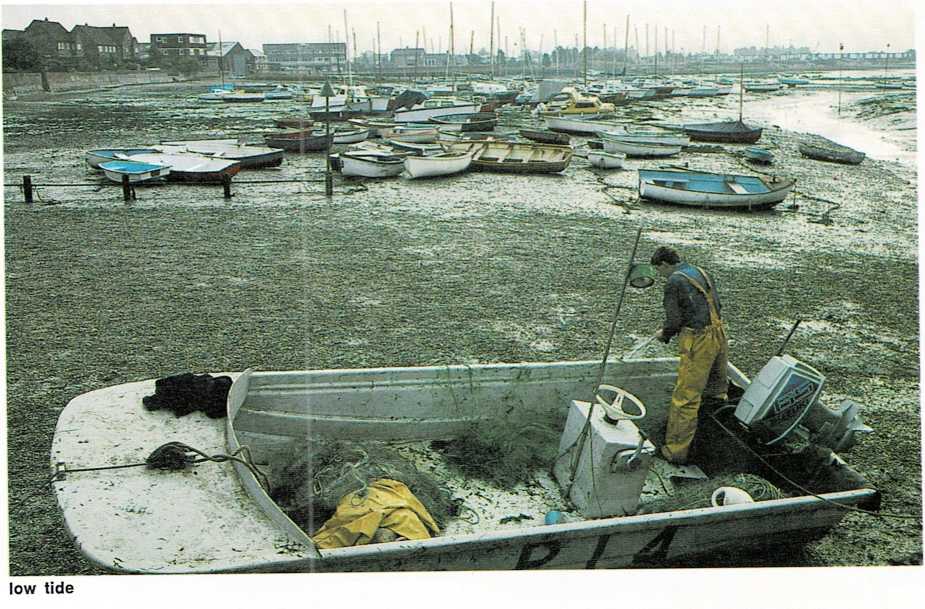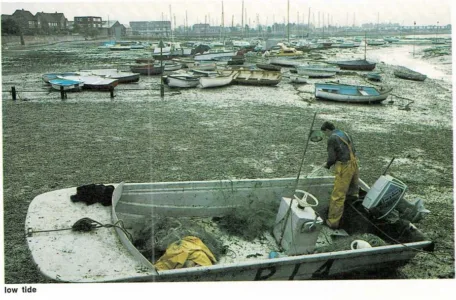

High tide, low tide
It is early in the misty morning. You are standing on a cliff that
overlooks the sea. Gulls soar overhead, calling to one another with
shrill cries. Below you, the gray sea crashes against the shore. You can
see a wide stretch of rocky beach sloping down to the water.
But if you come back to the same place six hours later, everything will
be different! Now, at noon, the sea has risen. The beach has disappeared
and the water is lapping against the side of the cliff. And if you come
back in six more hours, things will have changed again. You will see the
beach, and the sea will be low again.
This rise and fall of the sea is called the tide. Tides are caused by
the earth’s spin, and by gravitation, the mysterious force that makes
things tug at each other. In this case, it is mostly the gravity of the
moon tugging at the earth. High tides take place on the part of the
earth that is nearest to the moon. The moon’s gravity pulls the water
slightly away from the earth. At the same time it is also high tide on
the opposite side of the world. There, the tug of the moon’s gravity is
weaker, and the force of the earth’s spin pushes the water outward.
As the earth turns, the part of the sea that is high moves away from the
moon’s gravity. The water sinks back down. After about six hours, this
part of the sea is all the way down to what is called low tide.
Each part of the sea has two high tides each day— one when it is
beneath the moon and one when the moon is on the opposite side of the
earth. And, of course, there are also two low tides each day.

